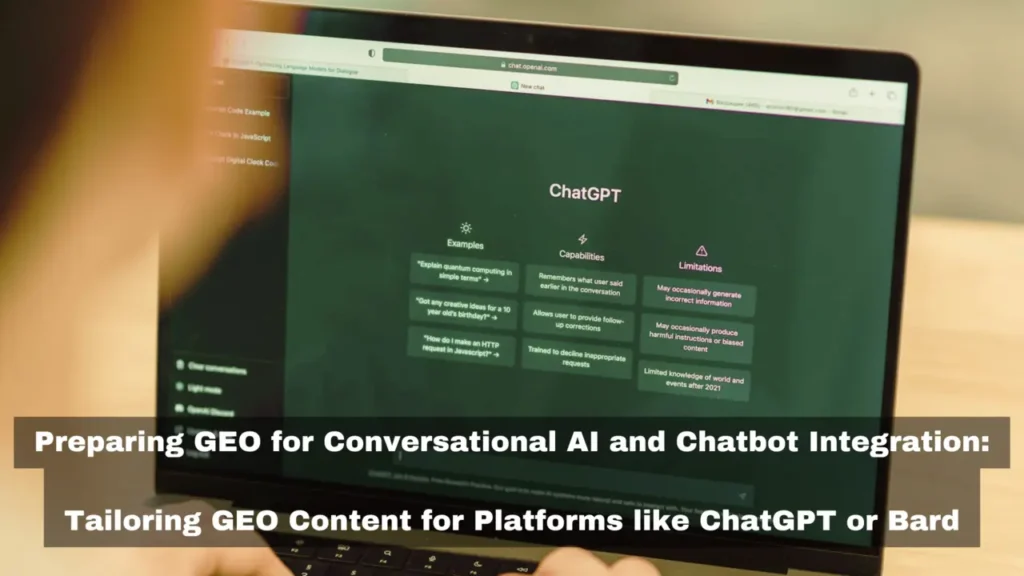Generative Engine Optimization (GEO) is an advanced approach to content generation that marries AI capabilities with modern search engine optimization (SEO) strategies. It involves aligning generative AI models, such as natural language processing systems, with the goals of search engines to provide content that is contextually relevant and satisfies user intent. GEO is about tuning the algorithms and parameters behind these models to ensure their outputs—whether articles, answers, or summaries—meet quality standards and match what users are searching for.
As search engines increasingly prioritize user experience over keyword density, GEO has emerged as a method to produce content that is not only aligned with search intent but is also contextually rich, engaging, and relevant. This strategic combination of relevance algorithms, language understanding models, and generative frameworks creates a cohesive foundation that allows AI-driven content to perform well in search results.
Key Takeaways
- GEO Focuses on User Intent – Prioritizing content that satisfies specific user needs rather than relying on keyword density alone.
- Combination of Technologies – GEO leverages BM25 and TF-IDF for relevance, BERT for contextual understanding, and GPT for creating engaging content.
- Enhanced User Experience – Content that aligns with GEO principles is more likely to fulfill user expectations and encourage interaction.
- Future-Ready Approach – GEO is built to adapt to evolving search algorithms and advancements in AI technology.
Core Components of GEO and Their Roles
In Generative Engine Optimization (GEO), the synergy of multiple algorithms and models creates an advanced framework for producing content that is both relevant and optimized for search. Each component—BM25, TF-IDF, BERT, and GPT—has a unique role in the GEO process, addressing different aspects of relevance, contextual understanding, and content generation.
Relevance Algorithms in GEO
Relevance algorithms form the foundational layer of GEO, ensuring that AI-generated content is aligned with specific topics and keywords that match user queries. These algorithms help establish a baseline relevance, guiding the AI to focus on terms that are meaningful to the user’s search intent. BM25 and TF-IDF are the two primary relevance algorithms used in GEO.
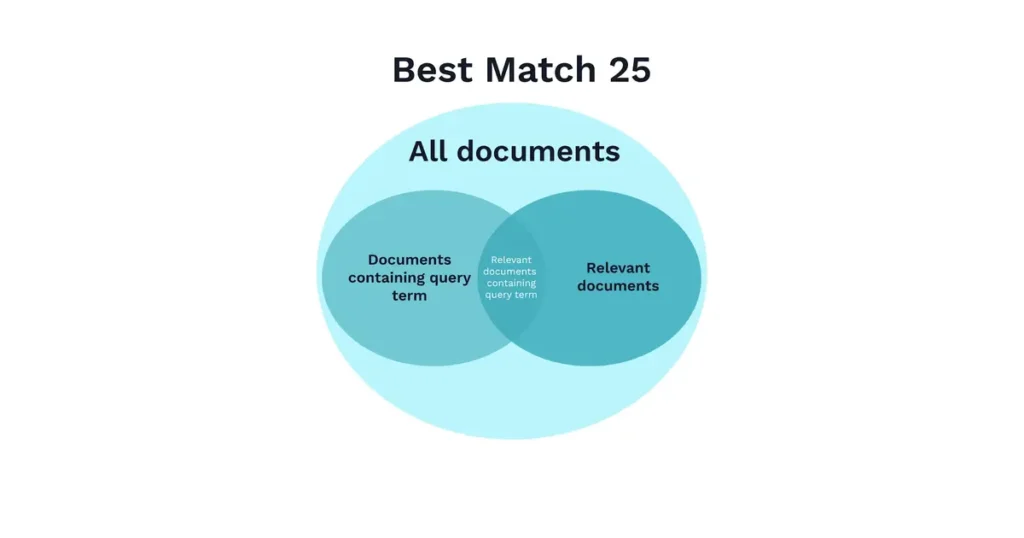
BM25: Optimizing for Advanced Relevance
BM25 (Best Matching 25) is a sophisticated ranking function that assesses how well a document matches a given search query. Unlike simple keyword matching, BM25 incorporates multiple factors—term frequency, document length, and inverse document frequency (IDF)—to evaluate the relevance of a document, making it more effective for information retrieval.
Key Features of BM25
- Term Saturation Handling: BM25 recognizes that a word’s frequency in a document can reach a saturation point. For example, if a keyword appears excessively in a document, BM25 accounts for this by reducing the weight of high-frequency terms, ensuring balanced relevance without keyword overuse.
- Document Length Normalization: Longer documents naturally have more terms, but that doesn’t always make them more relevant. BM25 adjusts for document length, so a concise document with high relevance can rank just as well as a lengthy one. This prevents longer documents from dominating results solely due to their word count.
- Inverse Document Frequency (IDF): IDF is a core part of BM25, giving more weight to unique, less common terms. For instance, specific phrases or unique terminology related to niche topics gain relevance, while overly common words lose weight. This helps BM25 emphasize topic-specific language, which is particularly useful in aligning AI-generated content with specialized queries.
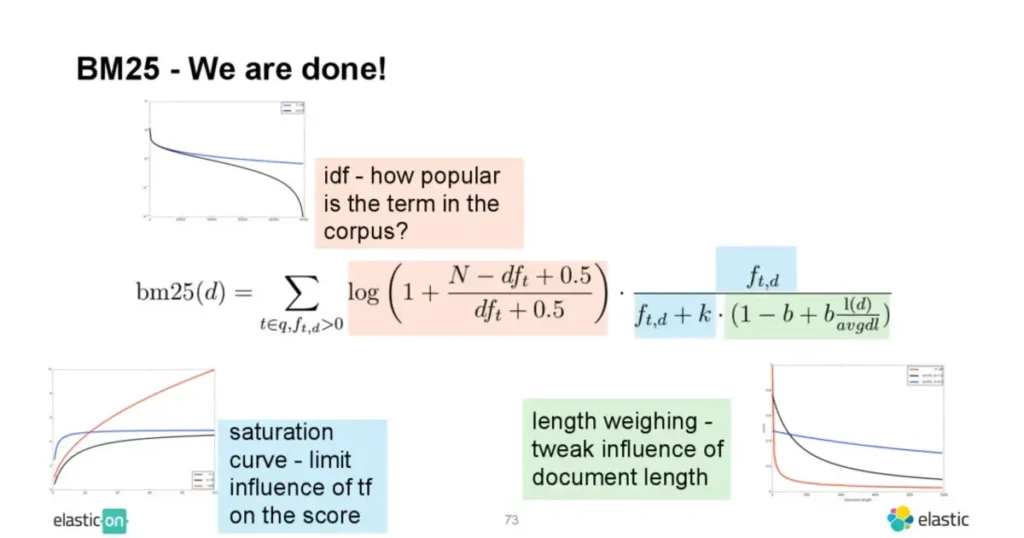
How BM25 Works in GEO
BM25 is calculated using a formula that incorporates term frequency, inverse document frequency, and length normalization. Here’s a closer look at how each part of the formula contributes to GEO:
- Term Frequency (TF): BM25 refines TF by adding a parameter, k1, which modulates the impact of high-frequency terms. This ensures that the model does not over-prioritize words that appear too frequently within a document.
- Inverse Document Frequency (IDF): BM25’s IDF function adjusts for commonly used terms across multiple documents, thereby enhancing the weight of unique terms relevant to the user’s query.
- Length Normalization Parameter (b): This parameter normalizes document length, helping BM25 avoid bias toward longer documents.
Practical Applications of BM25 in GEO
- Content Ranking by User Intent: BM25 ranks AI-generated content based on relevance, ensuring that the highest-ranking responses align closely with user queries.
- Filtering Out Redundant Information: By mitigating the impact of repetitive terms, BM25 prevents irrelevant or redundant content from dominating the results.
- Use in High-Density Keyword Queries: BM25 is highly effective in handling dense, keyword-heavy queries, making it ideal for product descriptions, data tables, and FAQs where precision is key.

TF-IDF: Analyzing Content Weight Based on User Intent
Term Frequency-Inverse Document Frequency (TF-IDF) is a foundational model in information retrieval, and it plays a crucial role in GEO by scoring terms based on their importance within a document relative to their importance across a larger dataset. TF-IDF predates more advanced algorithms but remains a valuable tool for identifying keywords that align closely with user intent.
Core Mechanics of TF-IDF
- Term Frequency (TF): Measures the frequency of a term within a specific document. If a term appears frequently, it signals that the term is likely significant for the document’s topic. However, common terms like “the” or “is” are normalized to avoid skewing results.
- Inverse Document Frequency (IDF): IDF reduces the weight of terms that are common across many documents, while giving unique terms more importance. This balance allows TF-IDF to highlight keywords central to the topic, increasing content relevance for specific queries.
TF-IDF in GEO
TF-IDF scores are calculated by multiplying TF and IDF values for each term, resulting in a ranking that prioritizes unique, high-frequency terms relevant to the document’s content and the user’s intent.
Practical Applications of TF-IDF in GEO
- Keyword Identification: TF-IDF helps GEO models zero in on essential keywords that match user intent. This capability is especially helpful in scenarios where the search intent is broad, yet specific phrases signal the user’s needs.
- Summarizing Key Points: TF-IDF scores can summarize content by emphasizing the most relevant terms. This is useful for content summaries, abstracts, and snippets that capture the essence of a document.
- Improving Topic Relevance: TF-IDF guides GEO models to produce content with core concepts or keywords that resonate with users’ search queries, ensuring the generated content aligns with search engine ranking criteria.
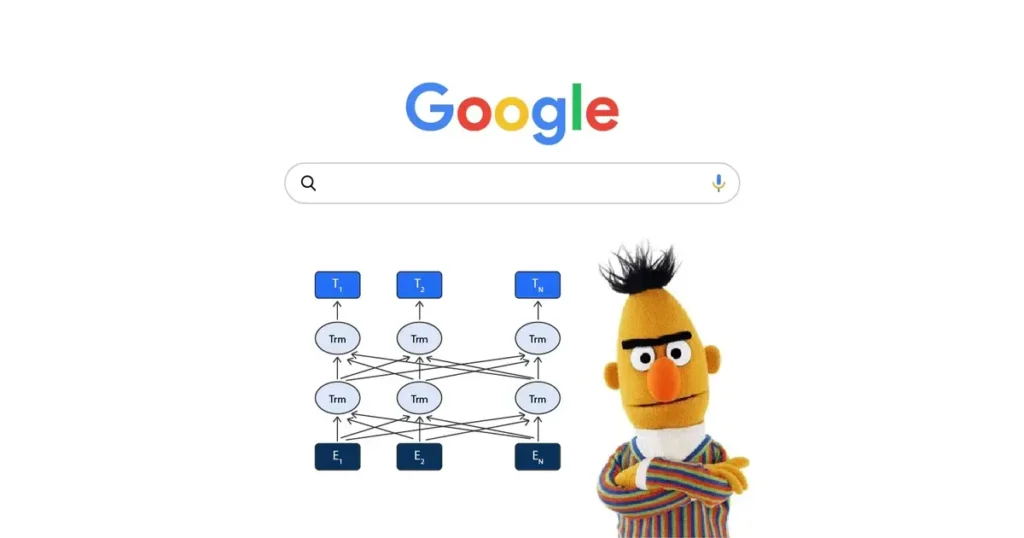
BERT: Capturing the Nuances in User Queries
BERT (Bidirectional Encoder Representations from Transformers) by Google is an advanced NLP model that excels in understanding context by reading text bidirectionally. BERT’s ability to interpret language contextually and at a sentence level makes it essential for understanding complex queries in GEO, especially for conversational or question-based searches.
Unique Features of BERT
- Bidirectional Context Analysis: Traditional NLP models analyze text in one direction, either left-to-right or right-to-left, limiting their understanding of full context. BERT, however, reads sentences in both directions, enabling it to recognize how words influence each other. This approach is particularly valuable in GEO, where search queries often include nuanced or compound phrases.
- Masked Language Modeling (MLM): BERT is trained by masking certain words within a sentence and then predicting them based on context. This masked language modeling approach helps BERT understand word relationships and sentence structure, which is essential for capturing subtle differences in user queries.
- Next Sentence Prediction (NSP): BERT also learns from pairs of sentences, helping it understand sequence, coherence, and relationships between topics. NSP enables BERT to analyze whether two sentences logically follow one another, which is valuable for queries involving multi-part questions or complex intent.
BERT’s Role in GEO
BERT’s deep contextual understanding makes it particularly effective in GEO for handling longer, conversational, or ambiguous queries. This capability allows GEO to generate content that aligns more closely with the complex nature of real-world user questions.
Practical Applications of BERT in GEO
- Enhanced Query Interpretation: BERT’s contextual analysis allows GEO to interpret layered meanings in queries, such as multi-step instructions or comparison-based questions.
- Synonym Recognition and Variant Matching: BERT’s bidirectional model can identify synonyms and similar phrases, expanding the search coverage and improving content accessibility across different variations of user queries.
- Direct Answers to Complex Questions: BERT is invaluable in GEO’s question-answering tasks, providing answers that are directly relevant to nuanced, conversational, or multi-part questions.
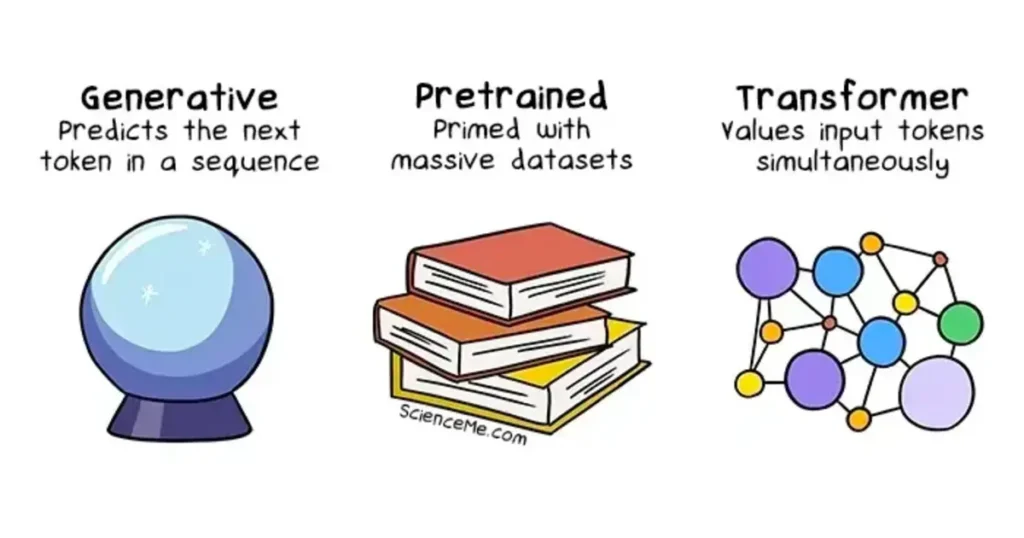
GPT: Creating Engaging, Contextually Relevant Content
GPT (Generative Pre-trained Transformer) by OpenAI is one of the most advanced models in natural language generation, designed specifically for generating coherent, contextually relevant text. GPT’s ability to produce human-like responses makes it a powerful tool in GEO for crafting content that is both engaging and aligned with user intent.
Key Components of GPT in GEO
- Transformer Architecture: GPT relies on a transformer-based architecture that allows it to understand relationships between words over long passages. This capacity is critical in GEO, where generating coherent, in-depth content is required, especially for detailed articles, product descriptions, and summaries.
- Self-Attention Mechanism: GPT uses self-attention to focus on the most relevant parts of the input sequence, allowing it to weigh contextually significant words and phrases more heavily. This ensures the generated text remains relevant to the user’s query throughout its length.
- Pre-Training and Fine-Tuning: GPT is pre-trained on a vast corpus of internet data, providing it with a broad understanding of language. It is then fine-tuned for specific tasks or topics, allowing it to adapt its responses to align with the needs of GEO. This fine-tuning process makes GPT versatile for generating content in various domains.
GPT’s Role in GEO
GPT’s generative capabilities allow it to create content that not only aligns with search intent but does so in a way that feels conversational, engaging, and relevant. In GEO, GPT is the engine that delivers high-quality, natural-sounding text aligned with relevance and contextual analysis provided by BM25, TF-IDF, and BERT.
Practical Applications of GPT in GEO
- Generating Detailed Content: GPT can produce in-depth articles, comprehensive product descriptions, and content that keeps users engaged, ultimately helping the content perform better in search engine rankings.
- Answering User Queries: GPT is adept at generating direct responses to specific questions, improving user satisfaction by providing concise, relevant answers.
- Supporting Multi-Turn Conversations: GPT’s ability to maintain coherence across multiple conversational turns makes it suitable for customer service applications and FAQ generation, where users expect contextually accurate answers throughout an interaction.
Synergies in GEO’s Core Algorithms
The algorithms within GEO complement each other to create a system that prioritizes user intent, contextual understanding, and engagement:
- BM25 and TF-IDF for Baseline Relevance – Establish foundational relevance by scoring key terms.
- BERT for Contextual Understanding – Enhances generative models by interpreting complex language.
- GPT for Content Generation – Synthesizes relevance and context into engaging, human-like content.
Practical Applications of GEO in Modern SEO
- Informational Content Creation – GEO ensures blog posts, articles, and educational content are optimized for search intent.
- Product Descriptions and E-commerce – GEO can craft descriptions that resonate with targeted search terms, improving visibility and conversions.
- Question Answering – GEO enables AI to provide accurate, context-aware answers, ideal for knowledge bases or support centers.
- Customer Support Automation – GPT’s conversational abilities, supported by BERT and relevance algorithms, allow for automated customer service solutions that feel natural and relevant.

Challenges in Generative Engine Optimization
- Balancing Relevance with Creativity: GEO must balance relevance with creativity. Excessive creativity can result in off-topic content, while a strict focus on relevance may make content less engaging. Effective GEO requires a balance between both.
- Interpreting User Intent Across Languages and Cultures: GEO must be versatile enough to interpret user intent in various languages and cultural contexts, ensuring generated content resonates globally. This is particularly challenging in multilingual markets, where search behaviors can differ significantly.
- Ethical Considerations in GEO: Ethical considerations in GEO include transparency, bias avoidance, and user benefit. It’s essential to maintain high standards in data quality and ethical guidelines, ensuring content is trustworthy and unbiased.
- Adaptation to Evolving Search Algorithms: Search engines frequently update their algorithms, meaning GEO models must adapt quickly to changes in ranking criteria. GEO must remain flexible to ensure long-term success.
Future Directions in GEO Algorithms
With ongoing advancements in AI, GEO is set to evolve significantly. Key areas of future development include:
- Improved Contextual Understanding: New models continue to enhance the contextual understanding of user queries, promising even deeper GEO capabilities and enabling content generation that is more precise and user-specific.
- Advanced Generative Models: Emerging models like GPT-4 are expected to bring greater language capabilities to GEO, allowing for more nuanced and relevant content creation. These models may also enhance the handling of multi-turn conversations and complex questions.
- Personalization Based on User Data: In the future, GEO could incorporate user data (while adhering to privacy laws) to create highly personalized content that aligns with individual user preferences and past search behaviors.
- Integration with Voice Search and Conversational AI: As voice search grows, GEO will likely play a significant role in optimizing conversational AI, ensuring that voice-activated queries are answered with precision and relevance.
FAQ on Technical Foundations of Generative Engine Optimization (GEO)
1. What is Generative Engine Optimization (GEO)?
GEO is the process of optimizing generative AI models, such as GPT, BERT, and BM25, to create content that is highly relevant to search queries and meets search engine quality standards.
2. How does BM25 contribute to GEO?
BM25 is a relevance-ranking algorithm that assigns scores based on keyword frequency, document length, and term importance, crucial for prioritizing relevant content in GEO.
3. What is the significance of BERT in GEO?
BERT provides bidirectional context analysis, enabling GEO to interpret complex, conversational, or multi-part queries effectively, enhancing query understanding.
4. Why is GPT important for GEO?
GPT is a generative model that excels at creating fluent, context-rich content, making it ideal for GEO as it can produce text that is engaging and highly aligned with user intent.
5. How does GEO differ from traditional SEO?
While traditional SEO often focuses on keywords, GEO leverages AI models to generate content that matches user intent on a deeper level, prioritizing relevance, context, and quality.
6. What are the ethical considerations in GEO?
Ethics in GEO involve transparency, avoiding biased content, and ensuring user benefit. Maintaining high standards in content quality is essential to prevent misleading information.
7. How does GEO impact e-commerce and product descriptions?
GEO can create product descriptions tailored to specific search terms, enhancing visibility and conversions by aligning closely with what customers search for.
8. What advancements are expected in GEO’s future?
Future advancements include improved contextual understanding, the development of more sophisticated models like GPT-4, and increased personalization to match individual user needs.
9. Can GEO be used in multilingual SEO?
Yes, GEO models are designed to interpret user intent across languages, making them versatile for multilingual SEO and content creation.
10. How will GEO adapt to voice search?
With the growth of voice search, GEO will integrate with conversational AI to provide accurate, relevant answers to voice queries, enhancing user experience.
Conclusion
Generative Engine Optimization (GEO) is redefining SEO by leveraging AI models to create content that aligns with user intent, prioritizes relevance, and meets the demands of modern search engines. With relevance algorithms like BM25 and TF-IDF, contextual language models like BERT, and generative frameworks such as GPT, GEO represents a comprehensive approach to content generation that optimizes for search engine standards and enhances user satisfaction.
As technology advances, GEO will become increasingly important in shaping the future of search, improving the quality of information available online and setting a new standard for content that is not only optimized but genuinely helpful.



